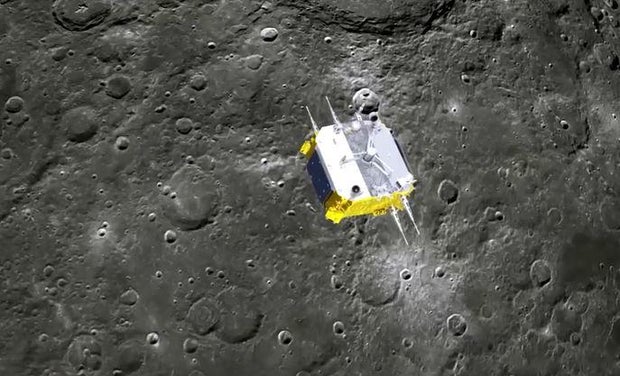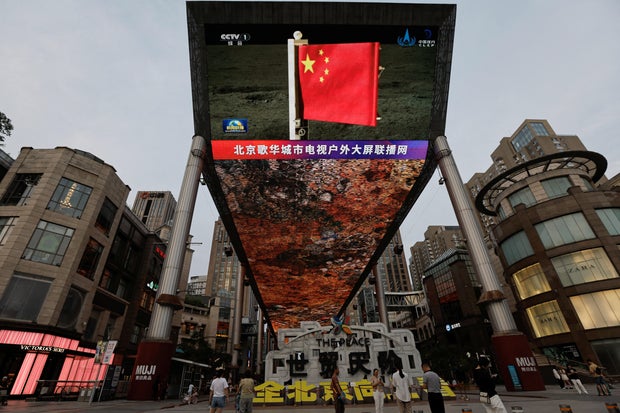/ CBS/AP
U.S. and China aim for moon in new space race
Beijing - China's Chang'e 6 lunar probe returned to Earth on Tuesday with rock and soil samples from the little-explored far side of the moon in a global first. The probe landed in northern China on Tuesday afternoon in the Inner Mongolian region.
"I now declare that the Chang'e 6 Lunar Exploration Mission achieved complete success," Zhang Kejian, Director of the China National Space Administration said shortly in a televised news conference after the landing.
Chinese scientists anticipate the returned samples will include 2.5 million-year-old volcanic rock and other material that they hope will answer questions about geographic differences on the moon's two sides.
The near side is what is seen from Earth, and the far side faces outer space. The far side is also known to have mountains and impact craters, contrasting with the relatively flat expanses visible on the near side.

While past U.S. and Soviet missions have collected samples from the moon's near side, the Chinese mission was the first that has collected samples from the far side.
The moon program is part of a growing rivalry with the U.S. — still the leader in space exploration — and others, including Japan and India. China has put its own space station in orbit and regularly sends crews there.
China's leader Xi Jinping sent a message of congratulations to the Chang'e team, saying that it was a "landmark achievement in our country's efforts at becoming a space and technological power."
The probe left Earth on May 3, and its journey lasted 53 days. The probe drilled into the core and scooped rocks from the surface. Before the return unit blasted off of the lunar surface for the trip back home, the Chang'e 6 unfurled a Chinese flag on the far side of the moon in another global first.

The samples "are expected to answer one of the most fundamental scientific questions in lunar science research: what geologic activity is responsible for the differences between the two sides?" said Zongyu Yue, a geologist at the Chinese Academy of Sciences, in a statement issued in the Innovation Monday, a journal published in partnership with the Chinese Academy of Sciences.
China in recent years has launched multiple successful missions to the moon, collecting samples from the moon's near side with the Chang'e 5 probe previously.
They are also hoping the probe has returned with material bearing traces of meteorite strikes from the moon's past.
